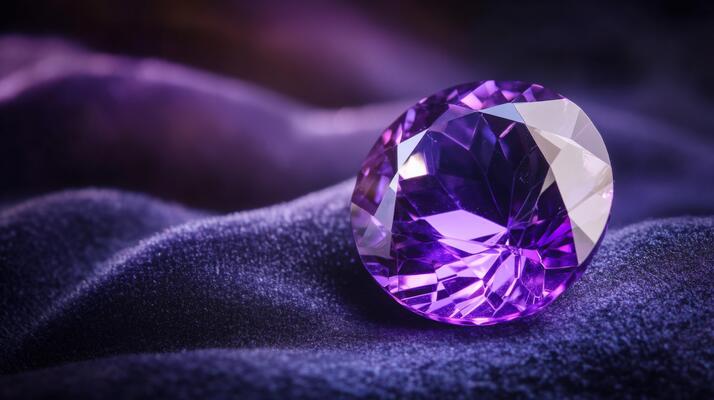Are Lab-Grown Diamonds Better than Lab-Created Diamonds?

Diamonds have long been revered for their timeless beauty and enduring value. With advancements in technology and a growing focus on ethical sourcing, lab-grown diamonds have emerged as a popular alternative to natural diamonds. But what exactly are lab grown diamonds better, and how do they compare to lab-created diamonds? Are they truly better? This article delves into these questions, providing a comprehensive comparison to help you make an informed decision.
Understanding Lab-Grown and Lab-Created Diamonds
What Are Lab-Grown Diamonds?
Lab-grown diamonds, also known as synthetic diamonds, are real diamonds that are created in a controlled laboratory environment rather than being mined from the earth. They possess the same physical and chemical properties as natural diamonds, including hardness, brilliance, and fire. These diamonds are produced using two primary methods: High Pressure High Temperature (HPHT) and Chemical Vapor Deposition (CVD).
High Pressure High Temperature (HPHT): This method mimics the natural conditions under which diamonds form in the earth’s mantle. Carbon is subjected to extreme pressure and temperature, resulting in the crystallization of diamond structures.
Chemical Vapor Deposition (CVD): In this process, a diamond seed is placed in a chamber filled with carbon-rich gases. The gases are ionized, causing carbon atoms to deposit onto the seed and grow into a diamond.
What Are Lab-Created Diamonds?
Lab-created diamonds is a broader term that encompasses both lab-grown diamonds and other forms of synthetic diamonds that may not have the same properties as natural diamonds. Lab-created diamonds may be produced using methods similar to those used for lab-grown diamonds but can also include diamonds that are made from non-diamond carbon sources or involve different technologies.
Comparing Lab-Grown Diamonds and Lab-Created Diamonds
Quality and Characteristics
When it comes to quality, lab-grown diamonds and lab-created diamonds can be virtually indistinguishable from natural diamonds and from each other. Both types of diamonds share the same physical, chemical, and optical properties as natural diamonds. They can be cut, polished, and graded in the same way as natural diamonds.
1. Purity and Clarity: Lab-grown diamonds are often of higher purity and clarity compared to natural diamonds because they are grown in controlled environments where impurities are minimized.
2. Color and Brilliance: Both lab-grown and lab-created diamonds can exhibit a range of colors and brilliance similar to natural diamonds. Their color and clarity can be enhanced or modified based on the specific needs of the buyer.
3. Certifications: Reputable laboratories provide certification for lab-grown diamonds, ensuring they meet established standards. These certifications are similar to those provided for natural diamonds and include details about the diamond’s cut, color, clarity, and carat weight.
Ethical and Environmental Considerations
1. Ethical Sourcing: One of the significant advantages of lab-grown diamonds is their ethical sourcing. They do not contribute to the issues associated with conflict diamonds and are a more sustainable choice.
2. Environmental Impact: Lab-grown diamonds have a lower environmental impact compared to traditional diamond mining. Mining can lead to soil erosion, habitat destruction, and other environmental concerns, whereas lab-grown diamonds are produced with minimal environmental disruption.
Cost and Value
1. Affordability: Lab-grown diamonds are generally more affordable than natural diamonds of comparable quality. The reduced cost can be attributed to the absence of mining and lower production costs.
2. Resale Value: The resale value of lab-grown diamonds is currently lower than that of natural diamonds. This is due to their relative newness in the market and the perception of natural diamonds as more valuable. However, this trend may change as lab-grown diamonds become more widely accepted.
Consumer Preferences
1. Personal Choice: Many consumers choose lab-grown diamonds for their ethical and environmental benefits. Others may prefer natural diamonds for their traditional value and rarity.
2. Trends and Acceptance: The popularity of lab-grown diamonds is growing, with increasing acceptance among consumers and jewelers. As technology advances and market dynamics evolve, lab-grown diamonds are likely to become even more prominent.
Conclusion
Lab-grown diamonds and lab created diamonds offer an intriguing alternative to natural diamonds, providing benefits in terms of quality, ethical sourcing, and environmental impact. While lab-grown diamonds offer a closer match to natural diamonds in terms of physical and chemical properties, the term “lab-created diamonds” can encompass a broader range of synthetic options.






